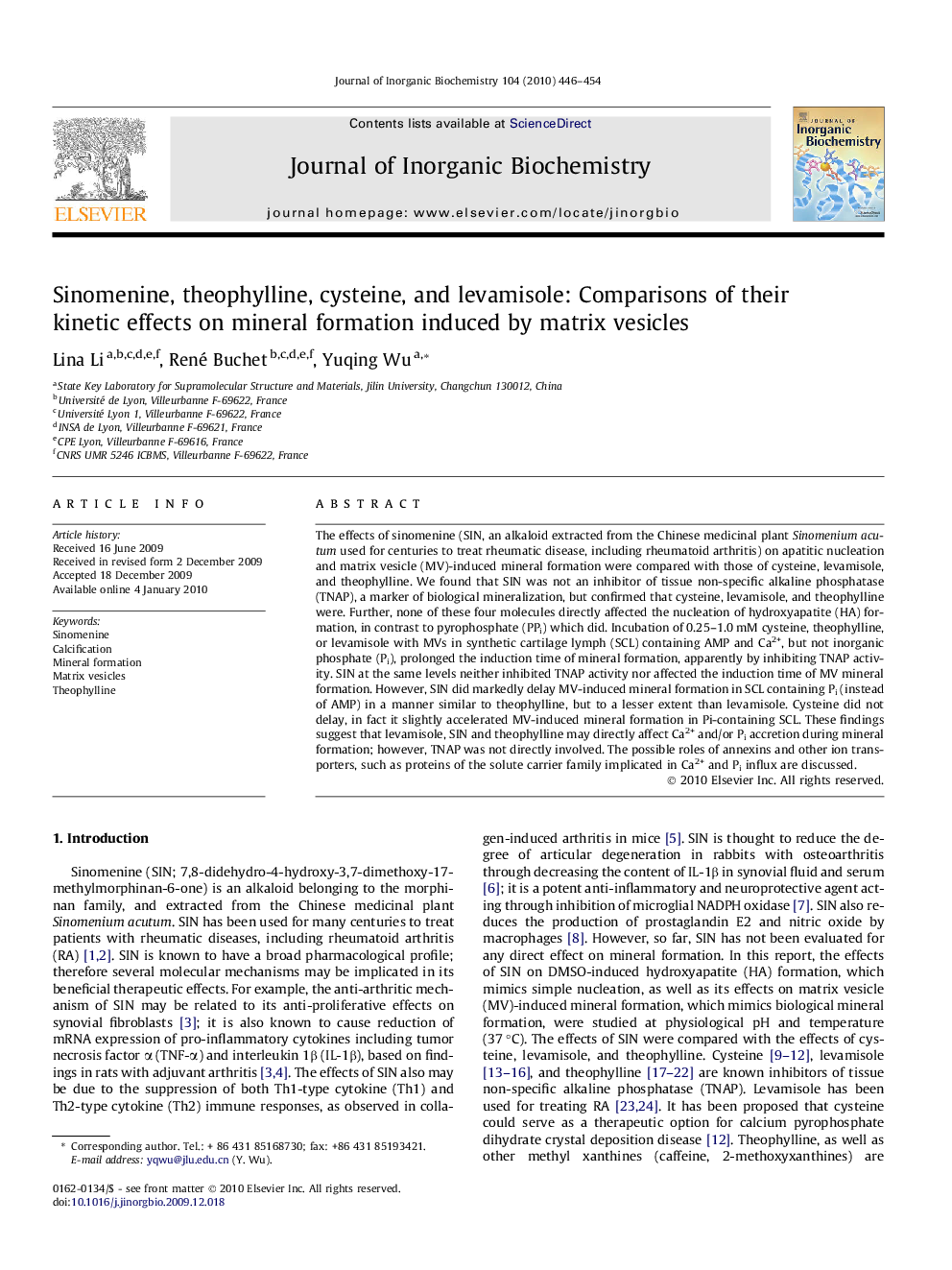| کد مقاله | کد نشریه | سال انتشار | مقاله انگلیسی | نسخه تمام متن |
|---|---|---|---|---|
| 1317990 | 976625 | 2010 | 9 صفحه PDF | دانلود رایگان |

The effects of sinomenine (SIN, an alkaloid extracted from the Chinese medicinal plant Sinomenium acutum used for centuries to treat rheumatic disease, including rheumatoid arthritis) on apatitic nucleation and matrix vesicle (MV)-induced mineral formation were compared with those of cysteine, levamisole, and theophylline. We found that SIN was not an inhibitor of tissue non-specific alkaline phosphatase (TNAP), a marker of biological mineralization, but confirmed that cysteine, levamisole, and theophylline were. Further, none of these four molecules directly affected the nucleation of hydroxyapatite (HA) formation, in contrast to pyrophosphate (PPi) which did. Incubation of 0.25–1.0 mM cysteine, theophylline, or levamisole with MVs in synthetic cartilage lymph (SCL) containing AMP and Ca2+, but not inorganic phosphate (Pi), prolonged the induction time of mineral formation, apparently by inhibiting TNAP activity. SIN at the same levels neither inhibited TNAP activity nor affected the induction time of MV mineral formation. However, SIN did markedly delay MV-induced mineral formation in SCL containing Pi (instead of AMP) in a manner similar to theophylline, but to a lesser extent than levamisole. Cysteine did not delay, in fact it slightly accelerated MV-induced mineral formation in Pi-containing SCL. These findings suggest that levamisole, SIN and theophylline may directly affect Ca2+ and/or Pi accretion during mineral formation; however, TNAP was not directly involved. The possible roles of annexins and other ion transporters, such as proteins of the solute carrier family implicated in Ca2+ and Pi influx are discussed.
The effects of sinomenine (SIN, an alkaloid extracted from the Chinese medicinal plant Sinomenium acutum used for centuries to treat rheumatic disease, including rheumatoid arthritis) on apatitic nucleation and matrix vesicle (MV)-induced mineral formation were studied and compared with those of cysteine, levamisole and theophylline. The possible roles of annexins and other ion transporters, such as proteins of the solute carrier family implicated in Ca2+ and Pi influx are discussed.Figure optionsDownload as PowerPoint slide
Journal: Journal of Inorganic Biochemistry - Volume 104, Issue 4, April 2010, Pages 446–454